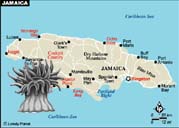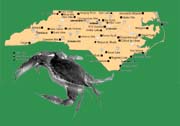
 |
 |
 |
 |
|
WELCOME This web site explores the concept of ecological synergism. Consider this:
But what happens when these natural ecological disturbances are compounded by each other and by human activities? How has the synergistic effects of the individual events impacted the ecosystem and its inhabitants? Which factors are responsible, and how is that determined? |
|||||||||||||||||
| HOW
TO USE THIS SITE
There are four case studies featured here that explore the concept of ecological synergism. Each case focuses on the declining population of a marine organism at different locations around the world, and arises from real scientific research. The challenge for you is to:
There is a "situation" scenario for the four case studies to help put each investigation into context. The challenge is the same for each case study, but the information and outcomes vary considerably. Data on potential factors are provided for each case study. Use the information to help make your connections and formulate your line of logic. There will be "connecting prompts" throughout each case study to help stimulate the thinking process. These will be indicated in orange. Good luck! |
|||||||||||||||||
| to TEACHERS | to STUDENTS | ||||||||||||||||
|
This website contains more than just pages of information. There is an overall task for students to do while they explore the concepts and contents presented here. The design and structure of this website is based upon learning theories from Benjamin Bloom, Jean Piaget, David Ausubel, and Joseph Novak. Students work in pairs or teams to accomplish the task. Each case study is placed within a real life context. The challenge is for students to read the information, analyze the data, synthesize their thoughts, and make evaluations and judgements based on their constructed understanding. Graphs and tables give students a chance to conduct real scientific research. The connecting prompts are provided to help facilitate this process. |
Be challenged by the concepts and contents presented in this website. There is a lot of information presented here. Don't just read through the information like a textbook. The purpose is not for you to memorize the contents, but to understand the concepts by making connections between the information provided. Some of the data is presented as text, while others are in the form of graphs, tables, and diagrams. Use the information provided to come up with your own understanding and line of reasoning. The connecting prompts are provided to help you make connections and to get you thinking. There may be more than one answer to those prompts, so be inquisitive in your thinking. |
||||||||||||||||
|
|||||||||||||||||
GOALS
- Understand ecological relationships among organisms and their environment.
- Evaluate real environmental issues and generate solutions.
- Learn to analyze and interpret graphs and tables from scientific research.
SUGGESTED READING
- Paine, T., M. Tegner, & E. Johnson (1998). Compounded perturbations yield ecological surprises. Ecosystem, 1: 535-545.
- Jackson, J. et al. (2001). Historical overfishing and the recent collapse of coastal ecosystems. Science, 293: 629-636